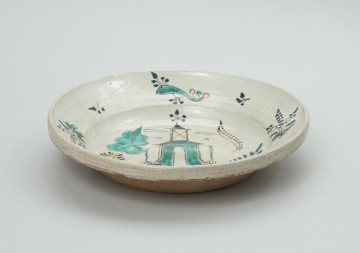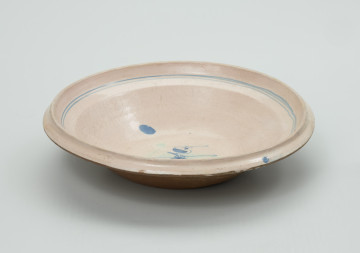
Plate
1751 — 1800
National Museum in Szczecin
Part of the collection: White ceramics from Szczecin
Maiolica and semi-maiolica faience came to Northern Europe from the south of the continent in the 16th century. On the Apennine Peninsula, they were produced as early as the 14th century, following Eastern ceramics. In the 17th century, porcelain from China conquered European markets. Eastern exports intensified the fashion for white-glazed and decorated dishes, above all with blue cobalt oxide. Pottery workshops in the Netherlands, Flanders and Germany started mass production of dishes imitating Chinese imports. White ceramics reached the southern coast of the Baltic Sea through the ports of Szczecin and Gdańsk and numerous enclaves of Dutch settlers throughout Pomerania at that time. These newcomers appeared in West Pomerania as part of the Frederician colonisation. Their aesthetic needs and habits contributed to creating vessels combining foreign features with traditional, local forms and ornamentation. A specific, local type of white ceramics was created - Stettiner Ware, dating back to the first half of the 18th century. The most extraordinary bloom of Stettiner Ware came in the 19th century; at the turn of the 19th and 20th centuries, it disappeared from the market. The presented plate is stylistically the most similar to the Chinese original desired in the 18th century. The thick line decoration with only cobalt oxide is reminiscent of Chinese porcelain, but the painted pattern is Pomeranian. The inverted cone-shaped basket holds stylised pomegranate fruit(?), the composition is complemented by other floral patterns. The wide collar of the spout is decorated alternately with palm leaves and pomegranate fruit. A floral bouquet placed in a basket/vase/puff is a prevalent motif in Pomeranian ornamentation, appearing on ceramics, furniture or embroidery.
Iwona Karwowska
Author / creator
Dimensions
cały obiekt: height: 5,3 cm
Object type
plate
Technique
glazing, wheel throwing, pottery
Material
ceramic, lead-tin glazing , copper oxide, cobalt oxide , alkaline glazing
Creation time / dating
Creation / finding place
Owner
Muzeum Narodowe w Szczecinie
Identification number
Location / status

1751 — 1800
National Museum in Szczecin

1701 — 1710
National Museum in Szczecin

1841 — 1860
National Museum in Szczecin
DISCOVER this TOPIC
National Museum in Szczecin
DISCOVER this PATH
Educational path